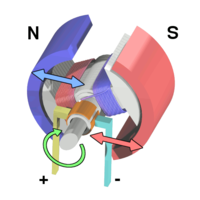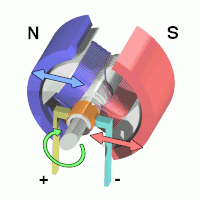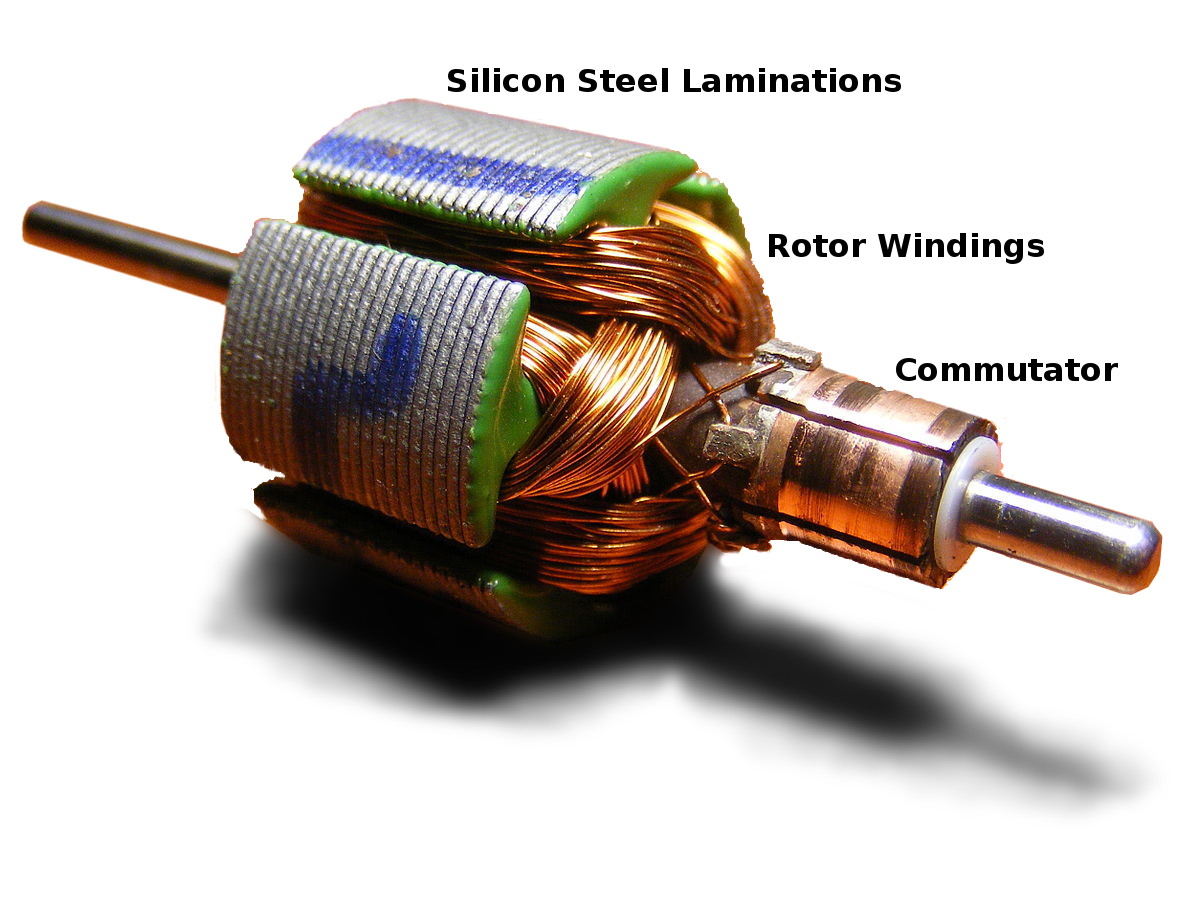A simple DC electric motor. When the
coil is powered, a magnetic field
is generated by the rotor, causing rotation.
When the rotor becomes horizontally
aligned, the torque becomes zero. At this point, the
commutator reverses the direction of current through the
coil, reversing the poles.




